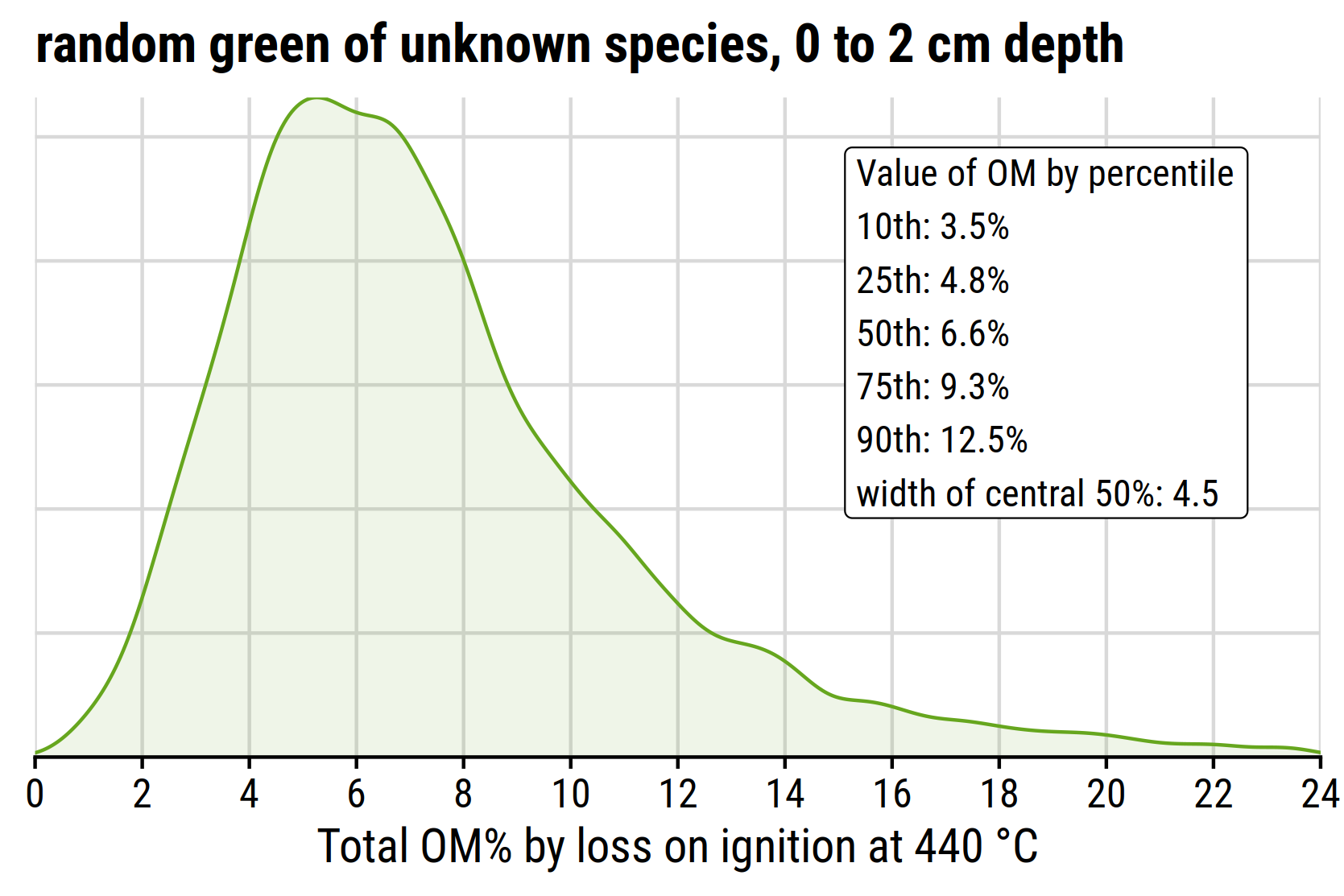This is a time of year when there is a lot of sand going down on putting greens, and sometimes a bit of coring too. The purpose of all this work? I’d say it’s to keep the organic matter levels at the surface of the greens at the desired level. The OM246 testing that I find incredibly useful is a weight loss on ignition test of the total organic matter by depth, right at the surface of a rootzone.
One time measurements of total organic matter are interesting because one can see how the total organic matter compares to other greens of the same species. That’s what the charts here are showing. Tracking changes in total organic matter over time are more than just interesting—they are a direct measurement of the effectiveness of topdressing applications and an indication of topdressing requirements.
This chart shows a summary of predicted test results at the 0 to 2 cm depth—that’s the top 0.8 inches of the profile—for four common cool-season putting green species.

These results shown here are based on the ATC database of OM246 test results.
If I were to sample any green, and didn’t know the species, this chart shows the predicted distribution of total organic matter right at the surface.

For more about this, you might like to:
-
Have a glance at my soil organic matter bullet list
-
Watch Frank Rossi’s ASTMA webinar in which he delivered this quote: “I don’t know anyone on sand-based greens that routinely pulls hollow tine cores—on a regular basis—and has a good reason for doing it.” You can watch the entire video for context.
-
Watch Roch Gaussoin’s recent AGIF webinar on Organic Matter Management on the Putting Surfacefor a comprehensive overview of this topic.